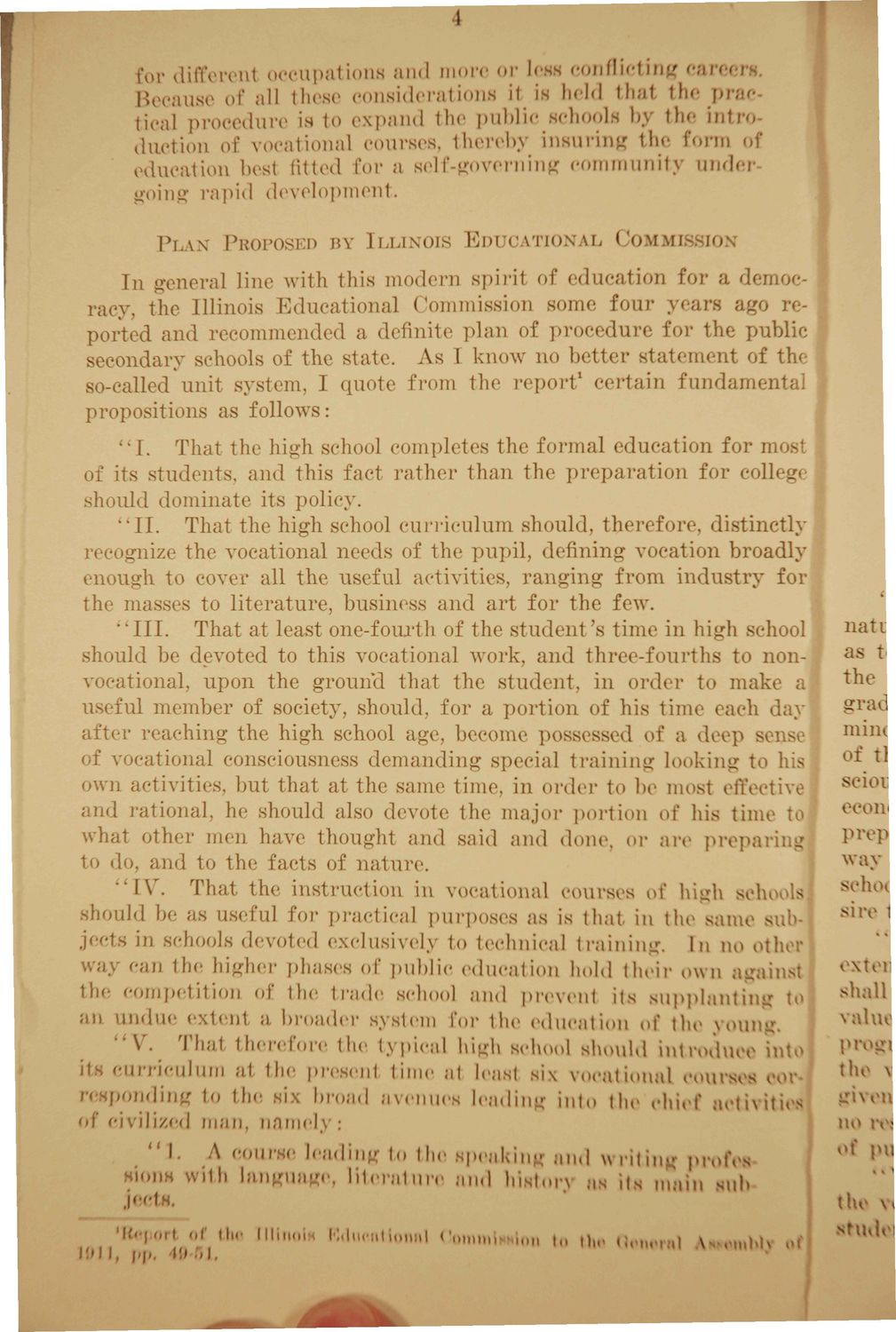| |
| |
Caption: Booklet - What is Involved in a Vocational Education (Davenport) (1915)
This is a reduced-resolution page image for fast online browsing.

EXTRACTED TEXT FROM PAGE:
I for differenl occupations and more or leaa conflicting car< - i i. Because of all these considerations il is held thai th* prac tical procedure is to expand the public schools bj th intra duction of vocational courses, thereby insuring the form of education best fitted for a self-governing community under going rapid development PLAN PROPOSED BY ILLINOIS EDUCATIONAL COMMJ ION ! In general line with this modern spiril of education for a democracy, the Illinois Educational Commission some four years ago reported and recommended a definite plan of procedure for the public secondary schools of the state. As I know no better statement of th 1 so-called unit system, I quote from the report certain fundamental propositions as follows: " I . That the high school completes the formal education for most of its students, and this fact rather than the preparation for coll should dominate its policy. " I I . That the high school curriculum should, therefore, distinctly recognize the vocational needs of the pupil, defining vocation broadly enough to cover all the useful activities, ranging from industry fo the masses to literature, business and art for the few. natl " I I I . That at least one-foiulh of the student\s time in high school as should be devoted to this vocational work, and thre< -fourths t nont« vocational, upon the grouncl that the student, in order to make a l the u ful member of society, should, for a portion of his time each day gnu ncmic after reaching the high school age, become possessed of a deep ns I ot > vocational consciousness demanding special training looking to his J f ^ s ov AVII activities, but that at the same time, in oi'drr to be most effective! ^ econ< id rational, he should also devote the major portion of his time to what other men have t h o u g h t and said and done, or are p r e p a r i n g to do. and to the facts of n a t u r e . " I V . T h a t the instruction in vocational courses < f high schools! > P^P wav SrluH hould be as useful for practical purposes as is that in the same subjects in schools devoted exclusively to technical training. In no o t h e r I way can the higher phases of public education hold their own against I the competition of the trade school and prevent its s u p p l a n t i n g l o | an undue extent a broader system for the education ol the \ oung. I "V\ Tlm.1 therefore the typical high school should introduce i n t o ! its curriculum at the present time at least six vocational courses cov v:iv ] oxtor s,la11 va iu> ' ! MVi t,l ° x responding to the six broad avenues leading into th. chief activities of civilized man, namel\ j " I A course leadin- to the speaking and w riting pro! s jriven no re; o( pu i mom with lanffuag( jecta, 'K«J'0rt \U\ I , \>\>. literature and hister\ .is its main ,: 11 nh >hh f ,,M ' ,,,I,M " ' itlonnl Oomi to t h r < i v I th sti \i i I ! ' •>J.
| |